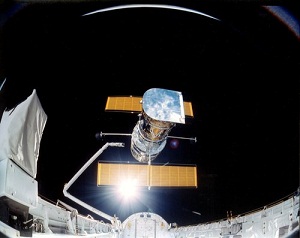Magnolia Solar wins $750,000 from Air Force to develop next-gen space PV
 Magnolia Solar Corp. (OBB: MGLT) was awarded $750,000 from the United States Air Force Research Laboratory as part of the Small Business Innovative Research (SBIR) program. The money will support the company’s development of thin-film, flexible multi-junction photovoltaics suitable for use in space and other applications.
Magnolia Solar Corp. (OBB: MGLT) was awarded $750,000 from the United States Air Force Research Laboratory as part of the Small Business Innovative Research (SBIR) program. The money will support the company’s development of thin-film, flexible multi-junction photovoltaics suitable for use in space and other applications.
A more terrestrial use of the cells could be for unmanned drones, according to Magnolia CEO Dr. Ashok Sood.
“They want to be able to use [solar] for adding more power availability so that they can put more sensors on them for the obvious reasons,” he said.
A modified PV cell using the technology also could be used to provide power for soldiers’ packs. There are other potential military applications, some of which Sood said he was unable to talk about.
The research now is in its second phase.
“In the phase 1 effort, we were able to demonstrate an improvement in the voltage performance in two of the key subcells,” said Dr. Roger Welser, Magnolia's chief technical officer. That boosted the cell’s overall performance.
“The Air Force of course are very interested in developing high-performance cells,” Welser said.
High-efficiency, weight and flexibility are important for space-based solar applications.
“You’re limited in terms of the area you can extend out and collect solar energy,” Welser said. “So they want to have the highest power output per unit they can achieve, and weight of course also is a big [issue]; they want to minimize weight.”
Among other advances the company, through its work with MicroLink Devices and Rensselaer Polytechnic Institute, was able to change the backplate of the device.
“They have developed a technology for removing the active devices from the underlying substrate,” Welser said. That allows the cell to be flexible and significantly reduces its weight.
“When the cells are launched, they have to be collapsed down. There are ways they do that with rigid cells right now. They're always trying to make them as flexible as possible to beak them into small pieces,” Welser said. “So the more flexible the cells the easier it's going to be for the satellite manufacturers to integrate them into systems that can deploy more readily that can go from being a folded position from launch to where they unfold.”
Space presents a challenge for PV efficiency—too much of the sun, according to Welser.
“The spectrums [of light] here on earth give you higher efficiencies on earth than in space,” said Welser. “The basic idea is the atmosphere cuts out quite a bit of ultraviolet [light]. It becomes easier to convert the remaining photons into power for a terrestrial application.”
The additional ultraviolet solar radiation in space moves too quickly to be absorbed by PV modules, reducing their efficiency.



